Ashbourne Easter 1916
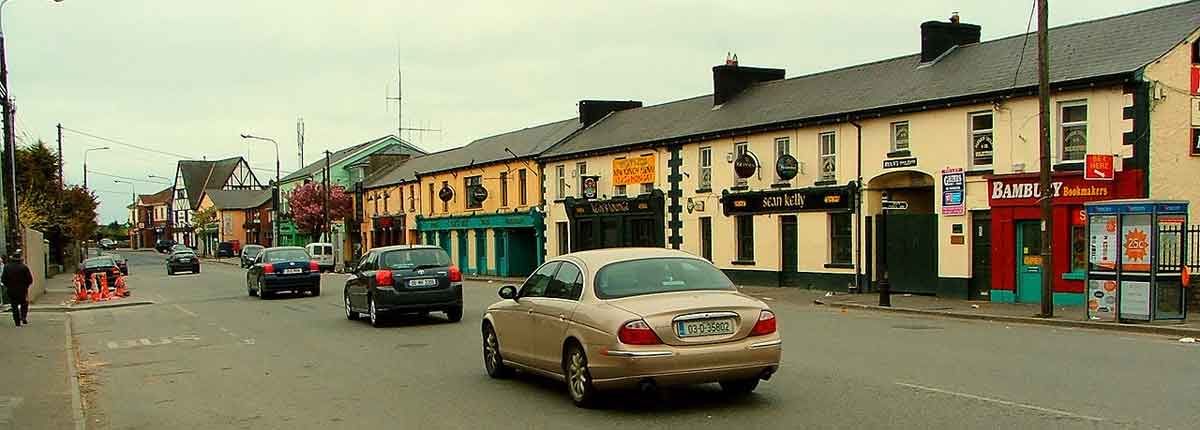 Main Street, Ashbourne, Co. Meath.
Main Street, Ashbourne, Co. Meath.
The Activities of The 5th Battalion of National Volunteers in Ashbourne, Co. Meath, and the surrounding areas, between Monday 24th April and Sunday 30th April, 1916.
The 1916 rising took place from Monday the 24th of April to Sunday the 30th, and is well documented in the History books of today. The rising was the turning point in the Irish nation’s outlook on sovereignty. It represented a change in the people’s desire for home rule, to a complete break away from Britain. It has a huge symbolic importance in Ireland history, and despite being a failure, it set down the ground work for the War of Independence, 1919 – 1921. However it is usually only the events in the city centre, such as the taking of the Four Courts by 1st battalion, or the Jacobs factory by the 2nd battalion that get mentioned in the History books. The successful battle at Ashbourne however is often referred to only in passing. It was one of the few rebellions outside of Dublin. Others took place in Galway, Cork, Wexford, Louth and Tipperary however the fight at Ashbourne was the biggest, and more importantly one of the only successful ones. This article is an exploration of the Easter rising, in Ashbourne Co. Meath.
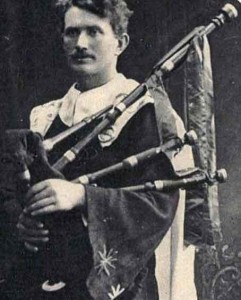 First, I think is important research the people involved in the engagement, particularly those in command. The action was carried out by the 5th battalion of the Dublin Brigade, known in the area as ‘The Fingal Volunteers’. The commandant in charge of these (roughly 60 men) was Thomas Ashe, a high ranking member of the Irish Republican Brotherhood, an active member of The Gaelic League and had recently been promoted to Battalion Commandant shortly before the rising. His second in command was Richard Mulcahy, who on the eve of the rising, was promoted to first lieutenant. Mulcahy was in the area with his own orders and only met up with Ashe by chance. He was in the Fingal area with two other men from ‘C Company’, with the objective of cutting communication lines at Howth junction which allowed communication with Britain. Afterwards they were supposed to return to Dublin, however, one of Mulcahy’s men was mistakenly captured by Ashe’s 5th Brigade. Ashe and Mulcahy, both members of the Keating Branch of the Gaelic League, had become friends in the years previous, and now met again, through this mistaken capture. Ashe appointed Mulcahy as his second-in command, and together they would lead their assault on RIC in the area. Battalion Quartermaster (BQM) was Frank Lawless. Other members of the Lawless family also were also involved such as Jim Lawless and Joe Lawless. Charlie Weston and Ned Rooney were, like Jim and Joe, officers put in charge of sections of the Battalion, when it had been split into 4 columns. Dr. Dick Hayes was the units Medical Officer, and also held the roles of Adjutant and Intelligence Officer.
First, I think is important research the people involved in the engagement, particularly those in command. The action was carried out by the 5th battalion of the Dublin Brigade, known in the area as ‘The Fingal Volunteers’. The commandant in charge of these (roughly 60 men) was Thomas Ashe, a high ranking member of the Irish Republican Brotherhood, an active member of The Gaelic League and had recently been promoted to Battalion Commandant shortly before the rising. His second in command was Richard Mulcahy, who on the eve of the rising, was promoted to first lieutenant. Mulcahy was in the area with his own orders and only met up with Ashe by chance. He was in the Fingal area with two other men from ‘C Company’, with the objective of cutting communication lines at Howth junction which allowed communication with Britain. Afterwards they were supposed to return to Dublin, however, one of Mulcahy’s men was mistakenly captured by Ashe’s 5th Brigade. Ashe and Mulcahy, both members of the Keating Branch of the Gaelic League, had become friends in the years previous, and now met again, through this mistaken capture. Ashe appointed Mulcahy as his second-in command, and together they would lead their assault on RIC in the area. Battalion Quartermaster (BQM) was Frank Lawless. Other members of the Lawless family also were also involved such as Jim Lawless and Joe Lawless. Charlie Weston and Ned Rooney were, like Jim and Joe, officers put in charge of sections of the Battalion, when it had been split into 4 columns. Dr. Dick Hayes was the units Medical Officer, and also held the roles of Adjutant and Intelligence Officer.
It is also important to note that the other volunteers which made up the rank and file of Ashe’s force, and The Irish Volunteers in general were largely untrained. From the beginning of the rebellion, 5th Battalion were poorly armed with an assortment of different weapons, generally riffles, and ammunition was scarce. There were no acceptance standards to be met, in regards to physical fitness or education, and their training was minimal. Some were also members of the IRB, but were still inexperienced in warfare, and basic battle tactics. IRB members had been urged to join the Volunteer Force by their leaders, as their superiors set about infiltrating the leadership of the Irish Volunteers, as they had done with the GAA in the 1880’s. In contrast, the RIC was well armed with no shortage of ammunition. A large amount of its recruits were also Irishmen, enticed to join the force, as they and their families needed an income. They were highly trained, and required to reach high physical and educational standards.
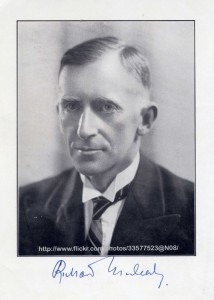 On the 24th April, Monday morning, Ashe received orders from James Connolly to send 40 of his Battalion to the GPO to help with the planned efforts there. Ashe with his force of about 60 men, decided to send 20, who the next day marched under Captain Dick Coleman to Dublin City. From the same order Ashe was instructed to raid nearby barracks’, which would hopefully release some of the pressure on those fighting in the City. On Wednesday the Fingal Volunteers raided RIC barracks’ in both Swords and Donabate. This allowed them to confiscate many weapons including 10 carbines, 3 service revolvers, and some ammunition, which was a welcome addition to their arsenal. Afterwards successful attempts were made to destroy rail communication at Donabate, and telegraph lines at Swords. The men proceeded to Rogerstown. Morale was high at this point, as the units “harassing actions” were proving successful. A number of other local volunteers in the Swords and Donabate area joined with the Fingal unit as they passed through. That night, after the fall of darkness the unit moved on the barracks at Garristown with a plan in place for another raid. However after bursting their way into the barracks, they found it deserted. This was because word spread of the previous raids, and the police at Garristown were relocated to nearby barracks’ as reinforcements. Instead Ashe and Mulcahy led the men to Baldwinstown, where they set up camp for the night.
On the 24th April, Monday morning, Ashe received orders from James Connolly to send 40 of his Battalion to the GPO to help with the planned efforts there. Ashe with his force of about 60 men, decided to send 20, who the next day marched under Captain Dick Coleman to Dublin City. From the same order Ashe was instructed to raid nearby barracks’, which would hopefully release some of the pressure on those fighting in the City. On Wednesday the Fingal Volunteers raided RIC barracks’ in both Swords and Donabate. This allowed them to confiscate many weapons including 10 carbines, 3 service revolvers, and some ammunition, which was a welcome addition to their arsenal. Afterwards successful attempts were made to destroy rail communication at Donabate, and telegraph lines at Swords. The men proceeded to Rogerstown. Morale was high at this point, as the units “harassing actions” were proving successful. A number of other local volunteers in the Swords and Donabate area joined with the Fingal unit as they passed through. That night, after the fall of darkness the unit moved on the barracks at Garristown with a plan in place for another raid. However after bursting their way into the barracks, they found it deserted. This was because word spread of the previous raids, and the police at Garristown were relocated to nearby barracks’ as reinforcements. Instead Ashe and Mulcahy led the men to Baldwinstown, where they set up camp for the night.
The next morning, Thursday April 26th, the Battalion was reorganized. Those who weren’t fully dedicated to the rising and those who were considered too old or too young were sent home. This left about 50 men. The Battalion moved on towards Ashbourne, and base camp was made in an unused farmhouse between Garristown and Ashbourne. On Friday, the day of the battle at Ashbourne, Ashe split his unit into four sections which acted like flying columns which would become famous in the War of Independence. The mission of the day was to destroy the Midland Great Western Railway (M.G.W.R) line which went through Batterstown. Intelligence suggested British troop reinforcements were being sent from Athlone into Dublin, and they hoped to sabotage the line disrupting the flow of troops in the city. Three sections left the camp at 10 am. The forth section under Jim Lawless remained to guard the camp and there, they assisted the Battalion Quartermaster (Frank Lawless) in gathering supplies and rationing food.
The other three sections had proceeded across the Dublin-Slane road on route to the railway line. Each section consisted of about 12 men, who were mostly on bicycles. Medical Officer, Dr. Dick Hayes drove the only motor car in which he carried his medical supplies. The convoy was led by two scouts from the first section who cycled ahead of the rest as ‘spotters’. Behind them travelled the rest of the 1st section, commanded by Charlie Weston. Ashe and Mulcahy travelled with the middle section commanded by Ned Rooney. The third section led by Joe Lawless. The route of the 37 men led them near Rath Cross north of Ashbourne, and Ashe agreed if the RIC barracks there had not already been evacuated, then it should be captured before continuing, allowing the Battalion to add more firearms to their arsenal.
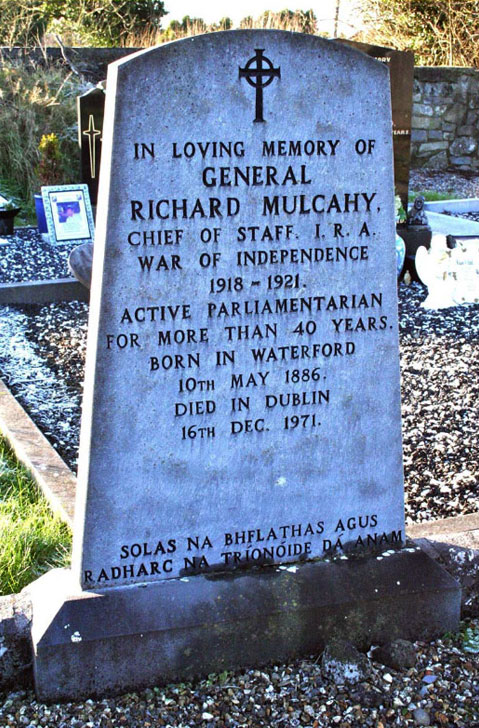 The three sections took a slight detour towards Ashbourne, and after reaching the main road, the scouts spotted an RIC Sergeant and Constable building a barricade in front of the barracks. The scouts approached quickly on their bicycles, and managed to disarm the duo, and marched them to the rear section. Ashe now ordered the men off their bicycles and for Section 2 and 3 to take cover where they stood, on the by-road just North of Rath Cross. Ashe and Mulcahy now proceeded with Weston’s section, and from an embankment on the opposite side of the road than the barracks, Ashe shouted to the police occupying the barracks, demanding they, “surrender in the name of The Irish Republic”. Those inside replied to Ashe’s demands in the form of rifle fire in his direction. Ashe dived for cover as the section returned heavy fire on the windows, as the battle of Ashbourne began.
The three sections took a slight detour towards Ashbourne, and after reaching the main road, the scouts spotted an RIC Sergeant and Constable building a barricade in front of the barracks. The scouts approached quickly on their bicycles, and managed to disarm the duo, and marched them to the rear section. Ashe now ordered the men off their bicycles and for Section 2 and 3 to take cover where they stood, on the by-road just North of Rath Cross. Ashe and Mulcahy now proceeded with Weston’s section, and from an embankment on the opposite side of the road than the barracks, Ashe shouted to the police occupying the barracks, demanding they, “surrender in the name of The Irish Republic”. Those inside replied to Ashe’s demands in the form of rifle fire in his direction. Ashe dived for cover as the section returned heavy fire on the windows, as the battle of Ashbourne began.
“The police refused to surrender. Ashe went back to his men, got them under cover, and the battle began in earnest. Some of the rebels got onto the footpath along the road, behind the fence in front of the barracks, and behind the fence on the opposite side of the road, whilst some others were on the north side of the Barracks. Some were behind a wall which was on the south-west side of the crossroads.” A witness account from John Austen, local post office worker.
Lawless and Rooney’s sections were in a field at the rear of the barracks, but because there was no back door or windows they could do nothing but hold their position. For the next 30 minutes the fire fight continued and later it became evident that the police suffered a number of causalities. Section one had two home made canister grenades with them and one was thrown at the barracks, but landed short, blowing a hole in the ground in front of the barracks. The grenade caused no infrastructural damage however within minutes, a white cloth, signalling surrender was displayed from one of the windows. Perhaps the explosion damaged the police morale, or perhaps their surrender was only a stalling technique, but never the less, a cease fire was called on both sides.
As Ashe waited for the police to emerge, back at the crossroads shots were fired by two volunteers. It was approximately 2 pm, and a convoy of police had just arrived from Slane in as many as 24 cars. The police, believing they had just driven into an ambush, dived from their vehicles into the nearby ditches, and anywhere else they could find cover. The volunteers had the element of surprise, and in these initial moments RIC Sergeant Shanagher and a number of others were killed, including civilian police drivers. 60 – 70 police had arrived in this convoy and although they didn’t know it, they almost doubled Ashe’s force. The fact that Ashe split his unit into columns, gave the illusion that they were in far greater numbers than in reality. In fact, the next day, newspaper articles would estimate Ashe’s numbers as 200! The heavy fire coming from the panicked police was flying in the direction of Ashe and Mulcahy at the barracks. Sections two and three were still awaiting orders and were oblivious to the numbers of police that had arrived. With all this heavy fire, they felt it necessary to move from their position at the rear of the barracks, to an adjoining ditch facing the direction the fire was coming from. Mulcahy met up with them to give them their orders, and reassure them. He told them 4th section had been sent for back at base camp, and together Mulcahy and the men from 2nd and 3rd raced across an open field, risking being shot to meet with Ashe. He informed the men of their orders. Section two, and half of section 3 were to go with Mulcahy to reinforce those of section one, who were involved in the heavy fire fight at the crossroads. The other 7 men of section 3 were directed, by Ashe, to a position in the rear flank of the police to wait for section four.
The fighting continued, but Jim Lawless’ 4th section had still not arrived, and as time went by the 7 men at the police rear flank were becoming increasingly impatient, and finally open fire on the police position. The police returned fire, and one of the seven is believed to have received a gun shot wound to the head. Another had to bring him for medical help, which left only five men at the rear. Only three of these had rifles, the other two shot guns. The RIC, outnumbering them in both numbers and ammunition kept them pinned down. Suddenly, movement behind the five led them to spin around and shoot at something creeping behind them, and then drop to the ground to dodge the retuning bullets. Little did they know but the force behind them was actually Mulcahy, leading the 4th section. Amid the confusion, they had mistaken each other for the enemy, and further more wasted almost all of their valuable ammunition.
The newly arrived volunteer reinforcements remained to hold the position at the rear, as Mulcahy went to explain what had happened to Ashe. Meanwhile Joe Lawless and another Volunteer, who had made there way back to the dressing station in desperate need of ammunition, managed to acquire a total of 20 rounds from a guard and one of the wounded. On their way back however, eleven police emerged from the ditches, with hands in the air, surrendering. These were stripped of the ammunition and brought back to the dressing station, which now had 13 prisoners, one guard, and two wounded Volunteers. The original two again headed back towards the crossroads, now in plentiful supply of ammunition.
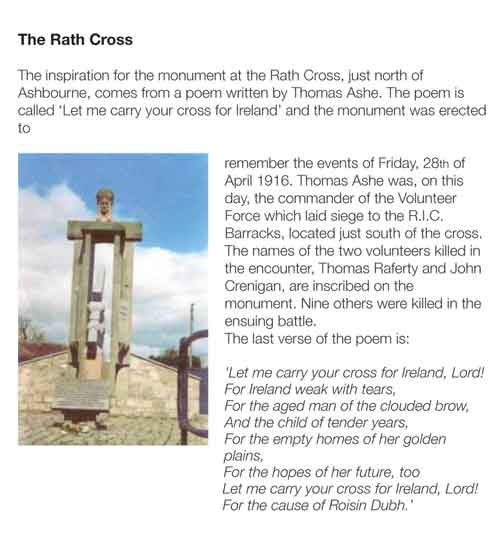 By this stage, it had been over 5 hours since Thomas Ashe first demanded the surrender of the RIC garrison. Those of Section four at the rear, now led by BQM, Frank Lawless, had pressed forward on the police, forcing them towards the main body of Volunteers at the crossroads. The commander of the RIC convoy was District Inspector Harry Smyth. He, in an effort to motivate his men forward, stood up on the roadside bank, shouting at them to move forward, only to realise the Volunteers behind him, had gotten closer than expected. Frank Lawless lifted his rifle aiming directly at the Inspector. Smyth spun around and fired his revolver killing Fingal Volunteer, Jack Crennigan, just before seconds before Lawless managed to take his shot. Smyth was and Englishman, and was ex-army. He was a District Inspector of first class, and had been stationed in Navan since 1912. Now the main body of Volunteers, noting the advancement of 4th section, arose from their concealed firing positions, with fixed bayonets and charged at the remaining 45 – 55 RIC. The police immediately abandoned their arms, demoralized by the death of their commander, and unconditionally surrendered.
By this stage, it had been over 5 hours since Thomas Ashe first demanded the surrender of the RIC garrison. Those of Section four at the rear, now led by BQM, Frank Lawless, had pressed forward on the police, forcing them towards the main body of Volunteers at the crossroads. The commander of the RIC convoy was District Inspector Harry Smyth. He, in an effort to motivate his men forward, stood up on the roadside bank, shouting at them to move forward, only to realise the Volunteers behind him, had gotten closer than expected. Frank Lawless lifted his rifle aiming directly at the Inspector. Smyth spun around and fired his revolver killing Fingal Volunteer, Jack Crennigan, just before seconds before Lawless managed to take his shot. Smyth was and Englishman, and was ex-army. He was a District Inspector of first class, and had been stationed in Navan since 1912. Now the main body of Volunteers, noting the advancement of 4th section, arose from their concealed firing positions, with fixed bayonets and charged at the remaining 45 – 55 RIC. The police immediately abandoned their arms, demoralized by the death of their commander, and unconditionally surrendered.
The 15 police in the barracks now came out too, to surrender with their comrades. The Volunteers went around collecting the vast amounts of arms and ammunition left over from the battle. Doctors, priests and other workers attended to the dead and wounded, including post office worker John Austen who collected the bodies, and gave this account:
“I told Ashe what I was going to do, and he told me to go ahead. Two of the policemen who had not been wounded helped me to collect the dead policemen into the cart. I had eight dead men in the cart when I had finished… Two of the dead men were civilians who I believe were drivers of cars.”
There was about 80 prisoners, who were assembled on the main road at the crossroads where Ashe made a short speech to them. He pointed out that their membership of the RIC led them to battle with their fellow countrymen, but pardoned them on behalf of the Provisional Government of the Irish Republic. He informed them that if they were ever seen again in arms against the republic, they would be shot. As yet there had only been one death on the side of the volunteers, John Crennigan. Six others were wounded, one of which, Thomas Rafferty, would later die from his wounds. There were eight to ten police fatalities, including; District Insp. Smyth; County Inspector Alexander Gray; Sergeant Shanagher (shot in the heart while leaving his car) and Sergt. J. Young. Constables James Hickey, Richard McHale, James Gormley and James Clery were also killed. In addition there were 15 – 18 wounded policemen. Also, a number of civilian drivers of police vehicles were also killed including a chauffeur named Kepp who was shot in the leg, which had to be amputated, but he later died. Two passers-by, J.J Carroll and J. Hogan were also reportedly shot dead. Ashe had the wounded sent in motor cars to The Meath Infirmary in Navan. Fr. Murphy and Fr. Dillon also arrived on scene, and attended to those in need.
Ashe and Mulcahy now took their men to set up camp at New Barn in Kilsallaghan and await further orders. When the order did come from Pearse however they were told to surrender. Mulcahy went to Dublin to verify the order, after which the 5th Battalion, Dublin Brigade arranged a surrender to the British cavalry, and were taken to Richmond jail. Ashe was sentenced to death for his leading role, which was later to be commuted to penal servitude for life. During his time in Lewes Gaol in England he wrote his poem ‘Let Me Carry Your Cross for Ireland, Lord!’ Ashe was released in 1917, however he was to be rearrested and imprisoned in Mountjoy Gaol not long after, where he and three others would go on hunger strike. Ashe died on the 25th of September as a result of brutal force feeding which punctured one of his lungs. Mulcahy on the other hand, was released from Fron-goch Internment Camp in Wales in December 1916. He went on to become Chief of Staff of the Irish Volunteers in March 1918, Commander in Chief of The Free State Army in 1921 and Minister for Defence in the Civil War.
The five and a half hour battle at Ashbourne was different than that of the rising in Dublin. Its entire approach was different. In Dublin the measures taken, were that of a defensive nature. The rebels took key locations in the city, and waited to be attacked, and in effect waited to be defeated. However in Ashbourne and the surrounding areas, the Volunteers split into columns, creating the illusion that they were in greater numbers than in reality. They attacked a barracks, confiscated arms, and left again without a trace. Their formation and guerrilla style tactics set the example, for the style of fighting displayed in the successful War of Independence. In total, the men of the North County Dublin, Fingal Volunteers captured four RIC police barracks, almost 90 prisoners, and completed one of the only successful rebellions in the country. They all risked, and two of which lost their lives, in the greatest event in the history of the town of Ashbourne.
In 1959, 43 years after the action at Ashbourne, a monument was unveiled by the President on April 26th, at the Rath Cross in memory of John Crennigan and Thomas Rafferty. Sculpted by Peter Grant, the monument displays the name of Thomas Ashe’s poem, “Let me carry your cross for Ireland, Lord”. The names of both who died there are also displayed on the memorial in Irish. The monument is known locally as The Rath Cross. – (Noel Francis Tier)
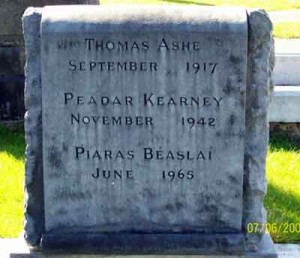 Thomas Patrick Ashe 12 January 1885 – 25 September 1917 was a member of the Gaelic League, the Irish Republican Brotherhood (IRB) and a founding member of the Irish Volunteers. He was born in Lispole, County Kerry, Ireland. Having entered De La Salle Training College, Waterford in 1905 he began his teaching career as principal of Corduff National School, Lusk, County Dublin in 1908. He spent the last years before his death teaching children in Lusk, where he founded the award-winning Lusk Black Raven Pipe Band as well as Round Towers Lusk GAA club in 1906. During the summer of 1913, Douglas Hyde, president of the Gaelic League, attempted to expel him and other members.
Thomas Patrick Ashe 12 January 1885 – 25 September 1917 was a member of the Gaelic League, the Irish Republican Brotherhood (IRB) and a founding member of the Irish Volunteers. He was born in Lispole, County Kerry, Ireland. Having entered De La Salle Training College, Waterford in 1905 he began his teaching career as principal of Corduff National School, Lusk, County Dublin in 1908. He spent the last years before his death teaching children in Lusk, where he founded the award-winning Lusk Black Raven Pipe Band as well as Round Towers Lusk GAA club in 1906. During the summer of 1913, Douglas Hyde, president of the Gaelic League, attempted to expel him and other members.
Commanding the Fingal battalion of the Irish Volunteers, Ashe took part in the 1916 Easter Rising. Ashe’s force of 60-70 men engaged British forces around north County Dublin during the rising. The battalion won a major victory in Ashbourne, County Meath where they engaged a much larger force capturing a significant quantity of arms and up to 20 Royal Irish Constabulary (RIC) vehicles. 24 hours after the rising collapsed, Ashe’s battalion surrendered on the orders of Patrick Pearse. On 8 May 1916, Ashe and Éamon de Valera were courtmartialled and both were sentenced to death.
The sentences were commuted to penal servitude for life. Ashe was imprisoned in Lewes Prison in England. With the entry of the U.S. into World War I in April 1917, the British government was put under more pressure to solve the ‘Irish problem’. De Valera, Ashe and Thomas Hunter led a prisoner hunger strike on 28 May 1917 to add to this pressure. With accounts of prison mistreatment appearing in the Irish press and mounting protests in Ireland, Ashe and the remaining prisoners were freed on 18 June 1917 by Lloyd George as part of a general amnesty.
Upon release, Ashe returned to Ireland and began a series of speaking engagements. In August 1917, Ashe was arrested and charged with sedition for a speech that he made in Ballinalee, County Longford where Michael Collins had also been speaking. He was detained at the Curragh but was then transferred to Mountjoy Prison in Dublin. He was convicted and sentenced to two years hard labour. Ashe and other prisoners, including Austin Stack, demanded prisoner of war status. As this protest evolved Ashe again went on hunger strike on 20 September 1917. On 25 September 1917, he died at the Mater Hospital after being force-fed by prison authorities. At the inquest into his death, the jury condemned the staff at the prison for the “inhuman and dangerous operation performed on the prisoner, and other acts of unfeeling and barbaric conduct”.
Ashe’s death had a significant impact – He is buried in Glasnevin Cemetery
